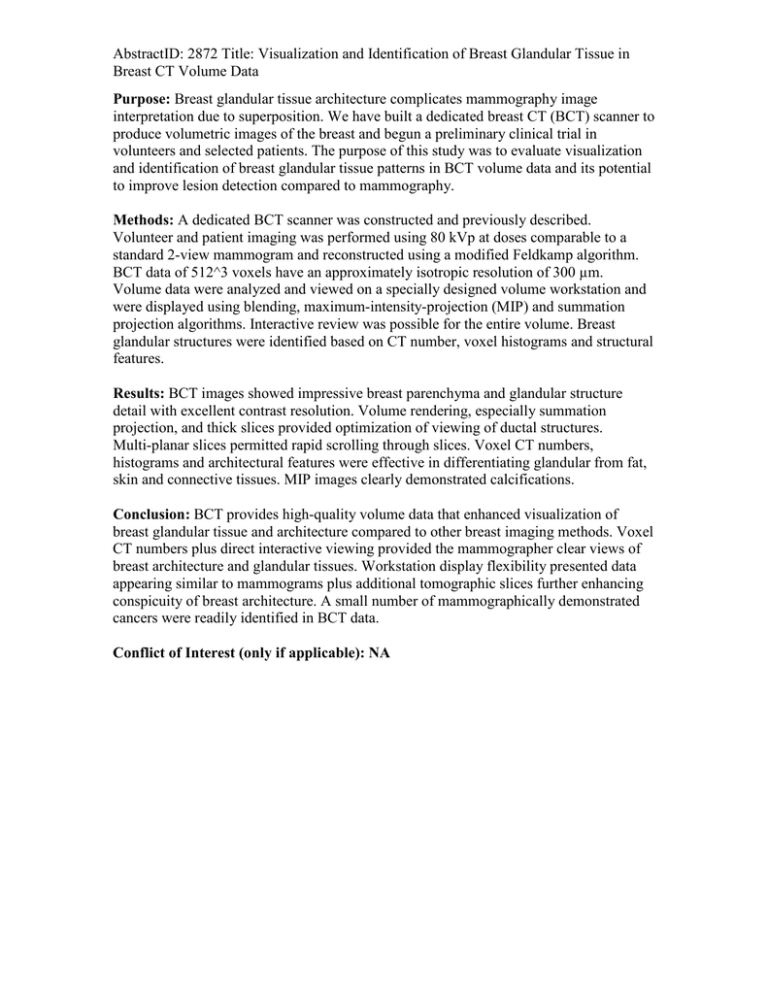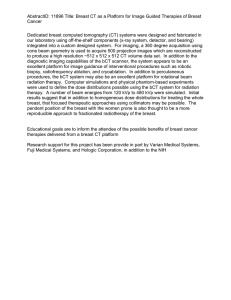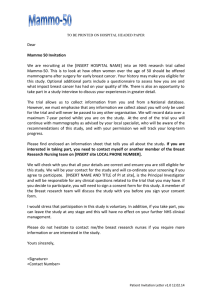AbstractID: 2872 Title: Visualization and Identification of Breast Glandular Tissue... Breast CT Volume Data
advertisement

AbstractID: 2872 Title: Visualization and Identification of Breast Glandular Tissue in Breast CT Volume Data Purpose: Breast glandular tissue architecture complicates mammography image interpretation due to superposition. We have built a dedicated breast CT (BCT) scanner to produce volumetric images of the breast and begun a preliminary clinical trial in volunteers and selected patients. The purpose of this study was to evaluate visualization and identification of breast glandular tissue patterns in BCT volume data and its potential to improve lesion detection compared to mammography. Methods: A dedicated BCT scanner was constructed and previously described. Volunteer and patient imaging was performed using 80 kVp at doses comparable to a standard 2-view mammogram and reconstructed using a modified Feldkamp algorithm. BCT data of 512^3 voxels have an approximately isotropic resolution of 300 µm. Volume data were analyzed and viewed on a specially designed volume workstation and were displayed using blending, maximum-intensity-projection (MIP) and summation projection algorithms. Interactive review was possible for the entire volume. Breast glandular structures were identified based on CT number, voxel histograms and structural features. Results: BCT images showed impressive breast parenchyma and glandular structure detail with excellent contrast resolution. Volume rendering, especially summation projection, and thick slices provided optimization of viewing of ductal structures. Multi-planar slices permitted rapid scrolling through slices. Voxel CT numbers, histograms and architectural features were effective in differentiating glandular from fat, skin and connective tissues. MIP images clearly demonstrated calcifications. Conclusion: BCT provides high-quality volume data that enhanced visualization of breast glandular tissue and architecture compared to other breast imaging methods. Voxel CT numbers plus direct interactive viewing provided the mammographer clear views of breast architecture and glandular tissues. Workstation display flexibility presented data appearing similar to mammograms plus additional tomographic slices further enhancing conspicuity of breast architecture. A small number of mammographically demonstrated cancers were readily identified in BCT data. Conflict of Interest (only if applicable): NA



